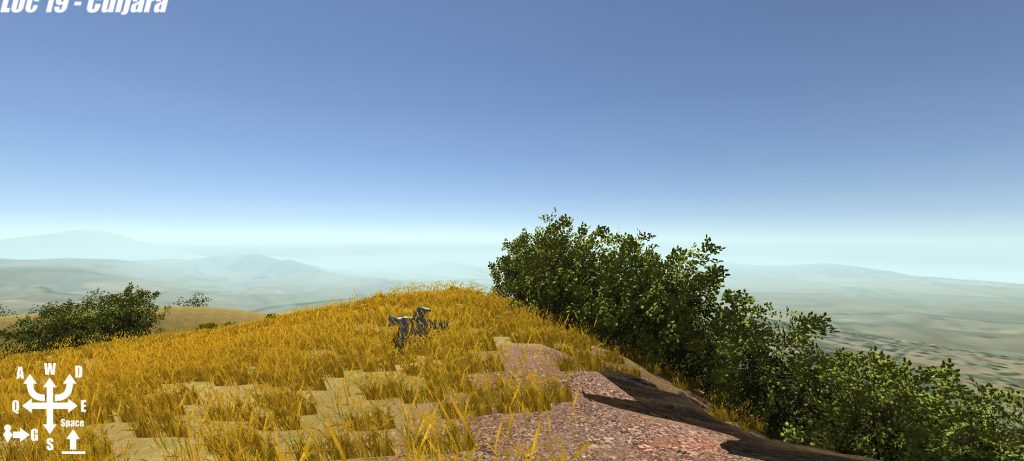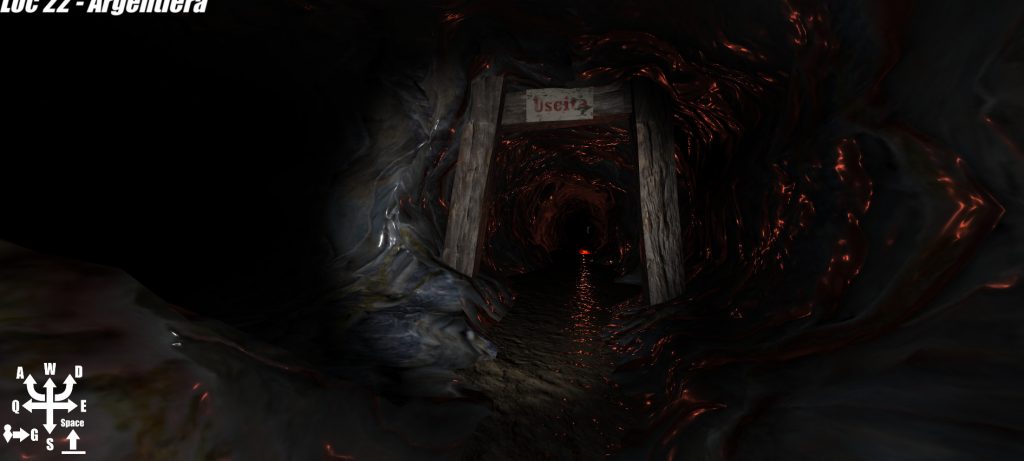Students in the third year of Imperial’s Geology course, one of the courses offered by the Department of Earth Sciences and Engineering, usually take part in a field trip to Sardinia. This year, course leaders translated the course to an online environment due to the COVID-19 pandemic.
Virtual Sardinia is a new way of learning geology that is accessible to everyone. This virtual field trip lets students wander around and inspect 3D models of real rocks in the game engine Unity. It aims to provide as realistic an experience as possible, since geological field training is intended to prepare students for working in the real world. It nevertheless lets students do more than would be possible in real life, including hovering in the air with rocket packs and exploring abandoned mines. Above all it aims to be fun, because to a geologist, fieldwork is geology fun.

Emilia Dobb, a student on the course, tells us more:
Despite a lot of students feeling disappointed that they couldn’t travel to Sardinia on a field trip, I was very excited that the trip had become virtual. I have a disability which means I can’t normally attend fieldwork, so the experience has been extra special for me.
The virtual fieldwork has been amazing so far. Our lecturers have put so much effort into making the trip fun and immersive. They have developed an app for us to explore 3D outcrops, and accommodated them with high-resolution photographs, 3D images of rock samples and even incorporated a virtual microscope which we can use to analyse the rocks through thin sections.
Leading the RSM third year fieldtrip to Sardinia (Virtual). Here we are this morning at wonderful Capo Caccia. This is a 3D environment you can walk around and geologically poke. The entire year fell off the cliff. @ImperialRSM pic.twitter.com/S1BzlQdQGH
— Matthew Genge (@rockbloke) May 21, 2020
The trip has consisted of taught fieldwork in the morning and self-fieldwork in the afternoon. This means students in Asia can participate in the taught sessions too and do their self-fieldwork in the morning before the next guided fieldwork starts. Along with the use of the app, Google Earth has supplemented our learning and allows for good field observations from photos that already exist on there. Ironically with virtual fieldwork we have been able to study some localities that we normally wouldn’t have been able to if we’d have actually gone to Sardinia, as they’re too dangerous on the roadside. Following the fieldwork at the different localities, Dr Matthew Genge then summarises the observations and interpretations we’ve made, just like he would in the field, but over Microsoft Teams instead.
This is the first fieldwork I have been able to attend since fresher’s week in my first year, and I’ve loved every minute of it. I feel like I’ve learnt so much, and it’s been great to be able to apply what I have learnt in lectures to real-life examples in the field – which is exactly what fieldwork is about, but normally I wouldn’t get that opportunity.


The app has been pretty fun to navigate. We have an AI demonstrator for the fieldwork in the app called GeeDee (Geology demonstrator), who has quite the attitude. I’ve grown quite fond of her and find myself talking to her when she gets in my way or disappears out of view…this is what happens during lockdown! We can walk around the outcrop as we would in the field and can even drop a field notebook to get a sense of scale, and use a compass-clino for dip and dip direction measurements. There are glowing spots on the outcrop which give us more information, such as the photographs and 3D rock samples. So far, we’ve driven quads around huge quarries (which I tend to crash and get stuck!) and used a jet pack to fly above a volcano to look at its shape, as well as to fly back onto the clifftop when we’ve fallen off! We’ve encountered goats, snakes and sharks too!
I’d like to say a huge thank you to our lecturers for putting this incredible experience together for us all. They’ve really made the best of an unfortunate situation.
To find out more about our undergraduate courses in Earth Science and Engineering, visit the Study website.